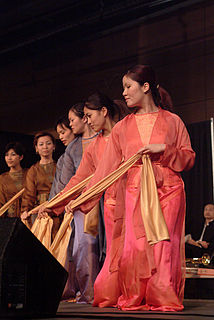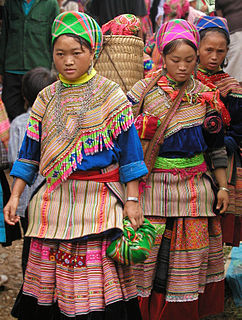
The California Institute of the Arts (CalArts) is a private university in Santa Clarita, California, United States. It was incorporated in 1961 as the first degree-granting institution of higher learning in the United States created specifically for students of both the visual and performing arts. It offers Bachelor of Fine Arts, Master of Fine Arts, Master of Arts, and Doctor of Musical Arts degrees among six schools: Art, Critical Studies, Dance, Film/Video, Music, and Theater.

The Boch Center is a 501(c)(3) nonprofit performing arts organization located in Boston, Massachusetts. It manages the historic Wang and Shubert Theatres on Tremont Street in the Boston Theater District, where it offers theatre, opera, classical and popular music, comedy, dance, and Broadway musicals. The Center also offers a diverse mix of educational workshops and community activities; collaborates with artists and local performing arts organizations; and, acts as a champion for the arts in the Greater Boston community by aggressively helping to make the arts an integral part of the community's collective, daily experience. It maintains partnerships with numerous arts organizations in Boston, including the Celebrity Series of Boston, Fiddlehead Theatre Company, Express Yourself, and more.

Consolidated Works was a "multi-disciplinary contemporary arts center" located successively in two former warehouses in the South Lake Union neighborhood of Seattle, Washington, USA, just west of what would be considered the Cascade neighborhood within South Lake Union. It incorporated an art gallery, theater, cinema, and music/dance/lecture hall, as well as studio spaces for artists and a bar and lounge.

Festál is a free series of annual ethnically-related festivals that take place on the grounds of Seattle Center in Seattle, Washington. A major cultural program of Seattle, these festivals aim to celebrate and connect the city to its varied ethnic and international community. Most festivals contain various arts performances, dances, marketplace and other programs. These have also come to be the annual gathering place for ethnic groups of the community. Both older and younger people attend, especially the dances and musical concerts.
May Lee-Yang, also known as May Lee, is a Hmong American playwright, poet, prose writer, performance artist and community activist in Saint Paul, Minnesota, United States. She was born in Ban Vinai Refugee Camp in Thailand and moved to Minnesota as a child with her family. She is also the executive director of the non-profit organization Hmong Arts Connection.
The Paj Ntaub Voice is the longest-running literary arts journal focused on Hmong art and culture, containing original literary and visual artwork as well as criticism.

The Walton Arts Center is a performing arts center. It is located in Fayetteville, Arkansas near the campus of the University of Arkansas, and serves as a cultural center for the Northwest Arkansas area. The building was opened in 1992 in large part because of funds donated by the Walton family. The center is host to many musicals, plays, and other artistic and educational events throughout the year.
AS220 is a non-profit community arts center located in Downtown, Providence, Rhode Island, United States. AS220 maintains four dozen artist live/work studios, around a dozen individual work studios, six rotating exhibition spaces, a main stage, a black box theater, a dance studio, a print shop, a community darkroom, a digital media lab, a fabrication lab, an organization-run bar and restaurant, a youth recording studio, and a youth program. AS220 is an unjuried and uncensored forum for the arts, open to all ages.

The Theater Offensive is a Boston-based theatrical organization dedicated to the production of queer works. The Theater Offensive was founded in 1989 by Abraham Rybeck "to present the diversity of lesbian, gay, bisexual, and transgender lives in art so bold it breaks through personal isolation, challenges the status quo, and builds thriving communities." The Theater Offensive mounts and produces festivals and individual productions by national and local queer performers, and also serves as a development environment for new theatrical work. In addition, The Theater Offensive works to build community through education, outreach, and political activism.
The Providence Black Repertory Company was a 501c3 non profit arts organization based in Providence, Rhode Island, USA. It offered programming inspired by the cultural traditions of the African Diaspora in Theater, Education, and Public Programs. It operated from 1996 till 2009.

The culture of Augusta, Georgia is influenced by the many different perspectives and histories of its community members, as well as its own history. The large African American population of the area as well as the city's rural surroundings have affected the types of festivals and culture produced within the city. Another major influence on the culture of the city is the annual Masters golf tournament held in April of each year. The most prolific cultural medium produced by the city is its musicians, as evidenced by James Brown, Jessye Norman, and Wycliffe Gordon. Though notably, the writer Frank Yerby and visual artist Jasper Johns were Augusta natives as well.
The Penumbra Theatre Company, an African-American theatre company in Saint Paul, Minnesota, was founded by Lou Bellamy in 1976. The theater has been recognized for its artistic quality and its role in launching the careers of playwrights including two-time Pulitzer Prize-winner August Wilson.
Herberger Theater Center is an indoor performing arts venue featuring three stages in downtown Phoenix, Arizona, whose mission is to support and foster the growth of performing arts in Phoenix as the premier performance venue, arts incubator and advocate. The Herberger Theater Center is not only a performing arts center, but is known in the Phoenix area as a cultivator and advocate for the arts community.
Chicago High School for the Arts (ChiArts) is a public 4–year college preparatory visual and performing arts high school located in the Humboldt Park neighborhood in Chicago, Illinois, United States. Operated by the Chicago Public Schools district, The school opened for the 2009–10 school year.
Saymoukda Duangphouxay Vongsay is a Minnesota-based Lao American spoken word poet, playwright, and community activist. She was born in 1981 in a refugee camp in Nongkhai, Thailand. She received her B.A. in English from the University of Minnesota, Morris. She is currently pursuing a Master in Liberal Studies focused on public policy and arts and cultural leadership at the University of Minnesota.

The arts in Atlanta are well-represented, with a particularly prominent presence in music, fine art, and theater.

Foung Hawj is an American media producer and politician who is a member of the Minnesota Senate. A member of the Minnesota Democratic–Farmer–Labor Party (DFL), he represents District 67, which includes the east side of Saint Paul in Ramsey County.

The Hmong people are a major ethnic group in the Minneapolis–Saint Paul area. As of 2000 there were 40,707 ethnic Hmong in the Minneapolis-St. Paul area. The 2010 U.S. Census stated there were 66,000 ethnic Hmong in Minneapolis-St. Paul, giving it the largest urban Hmong population in the world. Grit Grigoleit, author of "Coming Home? The Integration of Hmong Refugees from Wat Tham Krabok, Thailand, into American Society," wrote that the Minneapolis-St. Paul area "acted as the cultural and socio-political center of Hmong life in the U.S."
Katie Ka Vang is an American performance artist, poet and playwright. She has created and written several performance pieces and plays. These include wtf, Hmong Bollywood, Meaning of Freedom; Use of Sharpening, Youth In Session, and Myth of Xee.
Alberto Justiniano is the founder and artistic director of Teatro del Pueblo, a Latinx theater in St. Paul, Minnesota. He is a prominent member of the National Latina/o Commons and the Twin Cities Theaters of Color Coalition. Justiniano assumes a variety of roles in his work, including theater director, playwright, filmmaker, producer, and teacher.













